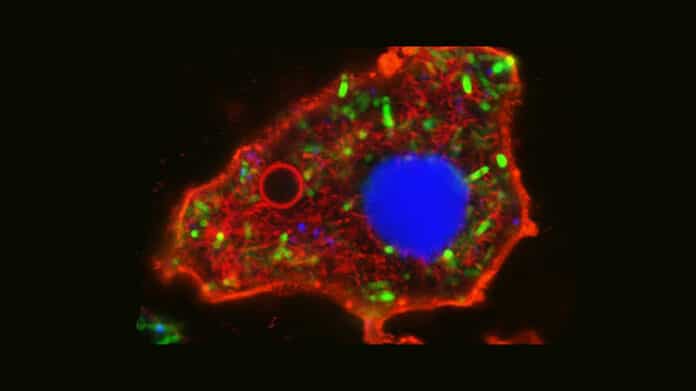At the nexus of living and non-living matter, improving the spontaneous bottom-up construction of artificial cells with high organizational complexity and diversified functions is still a problem. To address this challenge, scientists- led by the University of Bristol have created synthetic cells, known as protocells, using viscous micro-droplets filled with living bacteria as a microscopic building site.
To build these advanced synthetic cells, which mimic real-life functionality, scientists have harnessed the potential of bacteria. They exposed the empty droplets to two types of bacteria: One population spontaneously was captured within the droplets while the other was trapped at the droplet surface.
They then destroyed both types of bacteria. It causes the release of cellular components that remain trapped inside or on the surface of the droplets to produce membrane-coated bacteriogenic protocells containing thousands of biological molecules, parts, and machinery.
The fact that the protocells could generate RNA and proteins by in vitro gene expression and energy-rich molecules (ATP) via glycolysis suggested that the inherited bacterial components persisted in the synthetic cells.
To test the capacity of this technique, scientists used a series of chemical steps to remodel the bacteriogenic protocells structurally and morphologically. The droplet’s interior was filled with a cytoskeletal-like network of protein filaments and membrane-bound water vacuoles. The released bacterial DNA was compressed into a single structure resembling a nucleus.
Next, scientists implanted living bacteria into the protocells to generate self-sustainable ATP production and long-term energization for glycolysis, gene expression, and cytoskeletal assembly. Curiously, the protoliving constructs developed an exterior appearance resembling an amoeba due to local bacterial growth and metabolism, creating a cellular bionic system with integrated lifelike features.
Corresponding author Professor Stephen Mann said: “Achieving high organizational and functional complexity in synthetic cells is difficult, especially under close-to-equilibrium conditions. Hopefully, our current bacteriogenic approach will help to increase the complexity of current protocell models, facilitate the integration of myriad biological components and enable the development of energized cytomimetic systems.”
The first author Dr. Can Xu, Research Associate at the University of Bristol, added: “Our living-material assembly approach provides an opportunity for the bottom-up construction of symbiotic living/synthetic cell constructs. For example, using engineered bacteria, it should be possible to fabricate complex modules for development in diagnostic and therapeutic areas of synthetic biology, biomanufacturing, and biotechnology in general.”
Journal Reference:
- Xu, C., Martin, N., Li, M. et al. Living material assembly of bacteriogenic protocells. Nature (2022). DOI: 10.1038/s41586-022-05223-w
